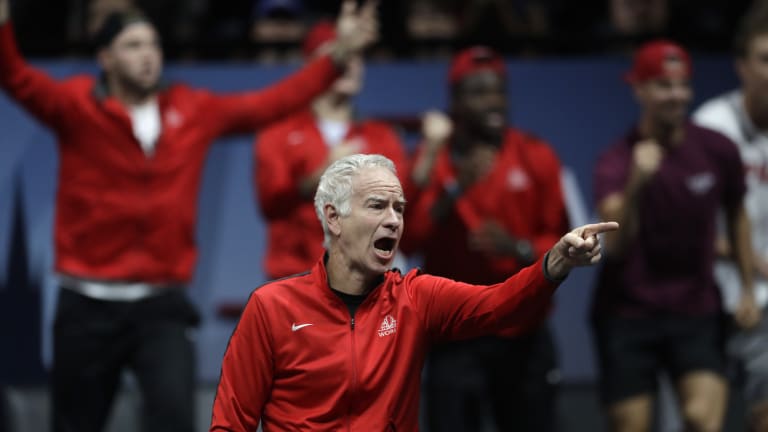“Tennis doesn’t have an idea problem,” former US Open tournament director Arlen Kantarian told a group of editors at TENNIS Magazine nearly 20 years ago. “It has a get-it-done problem.”
The idea, and the question, we were discussing that day was an age-old one: Why doesn’t tennis have its version of the Ryder Cup? During the 1990s, golf’s signature, biennial team competition between the United States and Europe had become must-see television for even the most casual sports fans. Yet tennis remained stumped as to how to replicate it. Trying to navigate around established team events like Davis Cup and Fed Cup, and the sport’s alphabet soup of governing bodies, was too difficult even for Kantarian, a hard-charging promoter and former NFL executive who had been brought in by the USTA to try to upset the pro-game apple cart. More than a decade after his exit, tennis’ get-it-done problem remained.
And then, suddenly, over the course of the last three days, the sport got it done. The Laver Cup, which made its debut from Friday to Sunday, is likely the closest thing that tennis will ever have to a Ryder Cup. The format was similar—Team Europe took on Team World in a fast-paced, three-day competition—and so was the unusual intensity that format generated. Like their peers in golf, tennis’ top male pros made the most of their opportunity to cross national boundaries, root openly for each other, and show the emotions that their formal, individualistic sports normally force them to keep in check. You can’t argue with the result: 83,273 paying customers and five sold-out sessions at the O2 Arena in Prague, worldwide headlines and a tidal wave of bro-mantic social-media content. The Laver Cup may have been the most fan-friendly new tennis event in the 50-year history of the Open era.
Court Report—Team Europe wins the inaugural Laver Cup:
